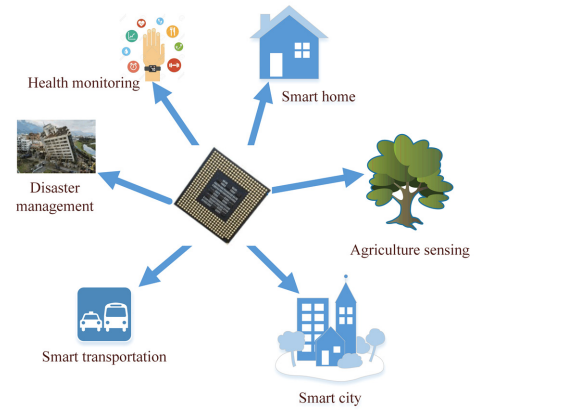An Intrusion Detection Using Machine Learning Algorithm Multi-Layer Perceptron (MlP): A Classification Enhancement in Wireless Sensor Network (WSN)
Main Article Content
Abstract
During several decades, there has been a meteoric rise in the development and use of cutting-edge technology. The Wireless Sensor Network (WSN) is a groundbreaking innovation that relies on a vast network of individual sensor nodes. The sensor nodes in the network are responsible for collecting data and uploading it to the cloud. When networks with little resources are deployed harshly and without regulation, security risks occur. Since the rate at which new information is being generated is increasing at an exponential rate, WSN communication has become the most challenging and complex aspect of the field. Therefore, WSNs are insecure because of this. With so much riding on WSN applications, accuracy in replies is paramount. Technology that can swiftly and continually analyse internet data streams is essential for spotting breaches and assaults. Without categorization, it is hard to simultaneously reduce processing time while maintaining a high level of detection accuracy. This paper proposed using a Multi-Layer Perceptron (MLP) to enhance the classification accuracy of a system. The proposed method utilises a feed-forward ANN model to generate a mapping for the training and testing datasets using backpropagation. Experiments are performed to determine how well the proposed MLP works. Then, the results are compared to those obtained by using the Hoeffding adaptive tree method and the Restricted Boltzmann Machine-based Clustered-Introduction Detection System. The proposed MLP achieves 98% accuracy, which is higher than the 96.33% achieved by the RBMC-IDS and the 97% accuracy achieved by the Hoeffding adaptive tree.
Article Details
References
Marriwala N and Rathee P. An approach to increasing the wireless sensor network lifetime. The 2012 World Congress on Information and Communication Technologies, pages 495–499. IEEE, 2012.
Nedumaran A, Ganesh Babu R, Kass MM and Karthika P. 2020. Machine Level Classification Using Support Vector Machine. AIP Conference Proceedings of International Conference on Sustainable Manufacturing, Materials and Technologies (ICSMMT 2019). vol. 2207, pp.020013-1020013-10, October 25-26.
Rami Ahmad, Raniyah Wazirali, and Tarik Abu-Ain, "Machine Learning for Wireless Sensor Networks Security: An Overview of Challenges and Issues," Sensors 2022, 22, 4730. https://doi.org/10.3390/s22134730
Lee, C.C. Security and privacy in wireless sensor networks: Advances and challenges. Sensors 2020, 20, 744
Finogeev, A.G.; Finogeev, A.A. Information attacks and security in wireless sensor networks of industrial SCADA systems. ACM Int. Conf. Proc. Ser. 2020
Endut n, Hamzah WMAFW, Ismail I, Yusof MK, Abu Baker Y, YusoffH. A Systematic Literature Review on Multi-Label Classification based on Machine Learning Algorithm. TEM Journal. 11; 2: 658?666, ISSN 2217?8309, DOI: 10.18421/TEM112-20, May 2022.
Kotsiantis SB. Supervised Machine Learning: A Review of Classification Techniques. Informatica 31 (2007) 249–268 251
Muhammad Rana, Quazi Mamun, Rafiqul Islam. Lightweight cryptography in IoT networks: A survey, Future Generation Computer Systems,Volume 129, 2022, Pages 77-89, ISSN 0167-739X.
Cui, L., Yang, S., Chen, F. et al. A survey on application of machine learning for Internet of Things. Int. J. Mach. Learn. & Cyber. 9, 1399–1417 (2018).
Kumar DP, Amgoth T, Annavarapu CSR. Machine learning algorithms for wireless sensor networks: A survey. Inf. Fusion. 2019; 49: 1–25
Agarwal A, Sharma P, Alshehri M, Mohamed AA, Alfarraj O. Classification model for accuracy and intrusion detection using machine learning approach. PeerJ Comput Sci. 2021 Apr 7;7:e437. doi: 10.7717/peerj-cs.437.
Tabbaa H and Ifzarne S. An Online Ensemble Learning Model for Detecting Attacks In Wireless Sensor Networks. IOP Conf. Ser.: Mater. Sci. Eng. 1055 012089
Babu RG, Vijay M, Parameswaran G, Anandhan C and Maurya S. Intrusion Detection Using Machine Learning in Sensor Network. IOP Conf. Ser.: Mater. Sci. Eng. 1055 012089
Elejla OE, Belaton B, Anbar M, Alabsi B and Al-Ani AK. (2019). Comparison of Classification Algorithms on ICMPv6-Based DDoS Attacks Detection Lecture Notes in Electrical Engineering (2018): n. pag.
Ifzarne S, Tabbaa H, Hafidi I and Lamghari N. Anomaly detection using machine learning techniques in wireless sensor networks. In Journal of Physics: Conference Series. 1743: 012021. IOP Publishing, 2021.
Ashraf N, Ahmad W, Ashraf R. 2018. A comparative study of data mining algorithms for high detection rate in the intrusion detection system. Annals of Emerging Technologies in Computing 2(1):49–57.
Ugochukwu CJ, Bennett EO, Harcourt P. 2018. An intrusion detection system using a machine learning algorithm. International Journal of Computer Science and Mathematical Theory 4(1):2545–5699
Kawade, Dipak R., and Kavita S. Oza. "Sentiment analysis: machine learning approach." International Journal of Engineering and Technology 9, no. 3 (2017): 2183-2186
Cliche, Mathieu. "BB_twtr at SemEval-2017 task 4: Twitter sentiment analysis with CNNs and LSTMs." arXiv preprint arXiv:1704.06125 (2017).
Hedde HWJ Bosman, Giovanni Iacca, Arturo Tejada, Heinrich J Wörtche, and Antonio Liotta. Ensembles of incremental learners to detect anomalies in ad hoc sensor networks. ad hoc networks, 35:14–36, 2015.
Nathan Martindale, Muhammad Ismail, and Douglas A Talbert. Ensemble-based online machine learning algorithms for network intrusion detection systems using streaming data. Information, 11(6):315, 2020
Ibrahim Alrashdi, Ali Alqazzaz, Raed Alharthi, Esam Aloufi, Mohamed A Zohdy, and Hua Ming. Fbad: Fog-based attack detection for IoT healthcare in smart cities. In 2019 IEEE 10th Annual Ubiquitous Computing, Electronics & Mobile Communication Conference (UEMCON), pages 0515–0522. IEEE, 2019.
Gopalakrishnan Subburayalu, Hemanand Duraivelu, Arun Prasath Raveendran, Rajesh Arunachalam, Deepika Kongara & Chitra Thangavel (2021) Cluster Based Malicious Node Detection System for Mobile Ad-Hoc Network Using ANFIS Classifier, Journal of Applied Security Research, DOI: 10.1080/19361610.2021.2002118
S. Srinivasa Rao, K. Chenna Keshava Reddy and S. Ravi Chand (2022), A Novel Optimization based Energy Efficient and Secured Routing Scheme using SRFIS-CWOSRR for Wireless Sensor Networks. IJEER 10(3), 644-650. DOI: 10.37391/IJEER.100338.
G. Vinoda Reddy, Kavitha Thandapani, N. C. Sendhilkumar, C. Senthilkumar, S. V. Hemanth, S. Manthandi Periannasamy and D. Hemanand (2022), Optimizing QoS-Based Clustering Using a Multi-Hop with Single Cluster Communication for Efficient Packet Routing. IJEER 10(2), 69-73. DOI: 10.37391/IJEER.100203
Ruili Wang, Wanting Ji, "Computational Intelligence for Information Security: A Survey", IEEE Transactions on Emerging Topics in Computational Intelligence, vol.4, no.5, pp.616-629, 2020.

